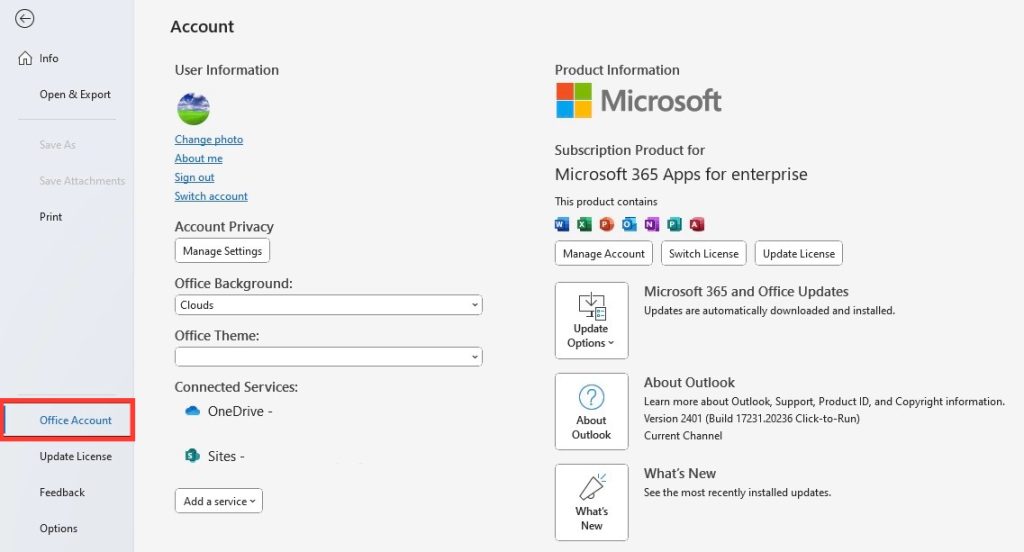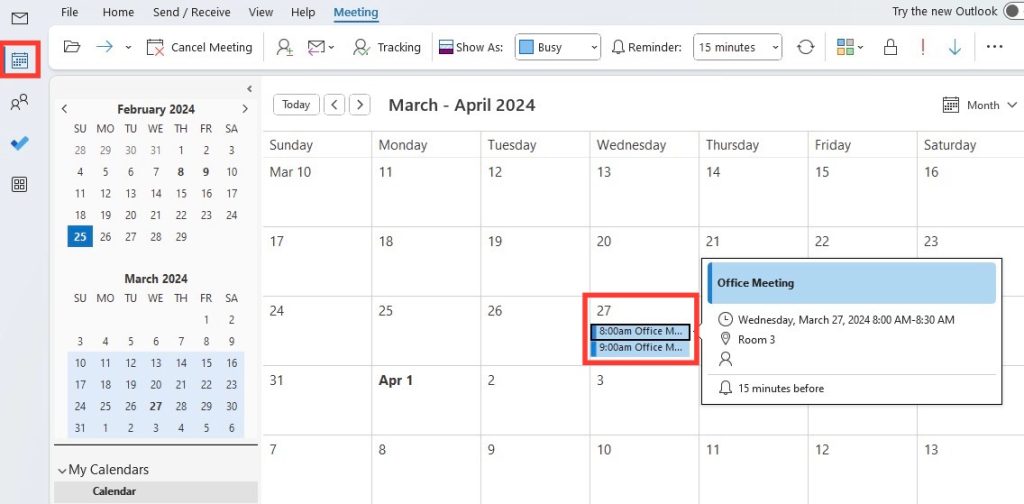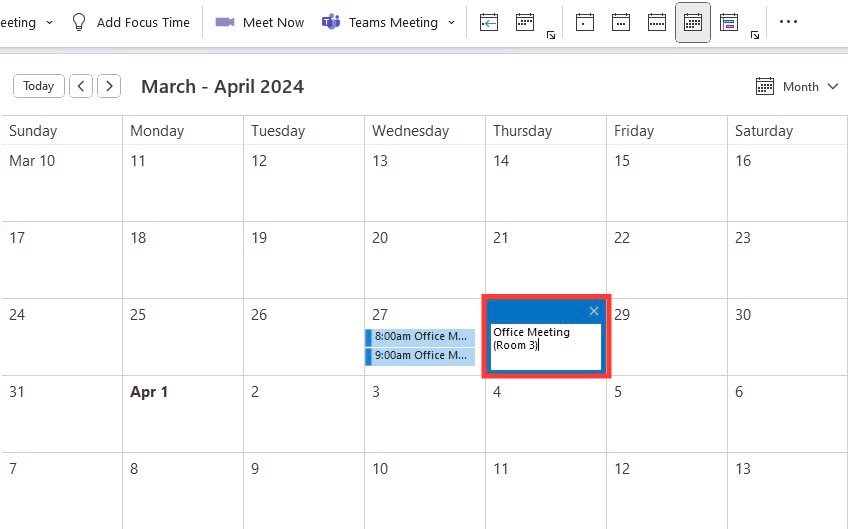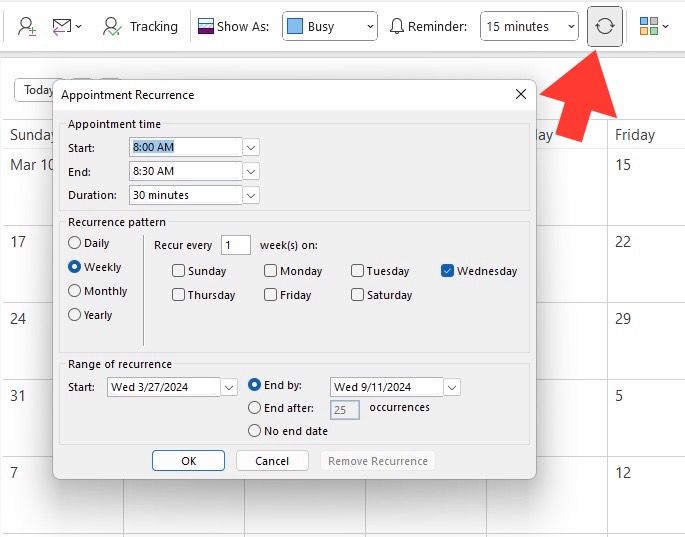Learn about Excel with our Free Microsoft Excel Online Course!
Before You Begin: Check Your Outlook Version
Before diving into the process of how to duplicate Outlook Calendar events, it is crucial to determine the version of Microsoft Outlook you are using. Different versions of the program might have slightly different steps or icons. To check your Outlook version, you can typically follow these steps:
STEP 1: Open Outlook on your desktop.
STEP 2: Click on “File” in the top-left corner of the window.
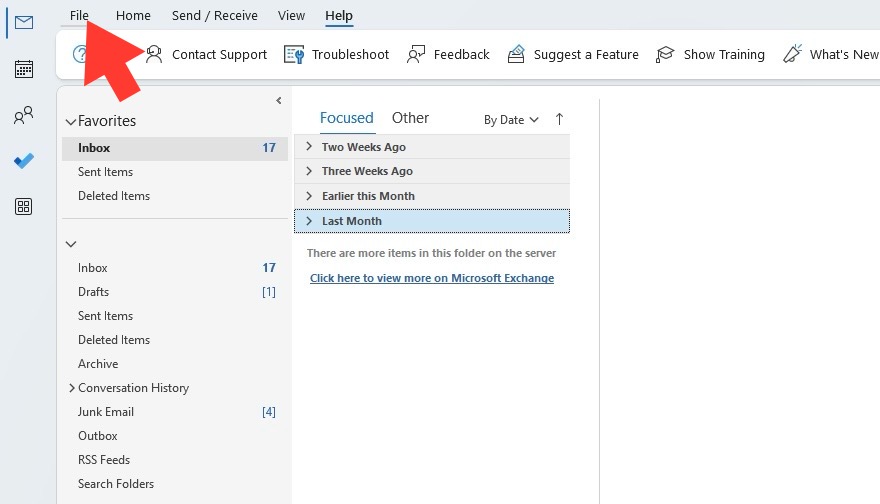
STEP 3: Select “Office Account” or “Help” depending on your version.
STEP 4: Under “Product Information,” you will see the version of Outlook you are running.
Knowing your version ensures that you follow the right instructions for your software and can utilize all features available for your calendar events.
Table of Contents
Straightforward Methods to Duplicate Calendar Entries
How to Duplicate a Calendar Invite in Outlook
STEP 1: Open your Microsoft Outlook application and navigate to your calendar.
STEP 1: Find the calendar event you wish to duplicate and click on it to select it.
STEP 2: Once selected, press `Ctrl+C` on your keyboard to copy the existing meeting.
STEP 3: Click on the date or time where you would like the new meeting to occur.
STEP 4: Press `Ctrl+V` on your keyboard to paste the copied event into the new time slot.
By following these steps, you can quickly and easily create a new calendar event by duplicating an existing one, which helps to maintain consistency and saves time if you’re scheduling similar meetings or events regularly.
Advanced Duplication Techniques for Scheduled Meetings
Automating the Duplication of Calendar Events
If you frequently need to duplicate calendar events, automating this task can streamline your scheduling process. Microsoft Outlook doesn’t have a native feature to auto-duplicate events, but you can use VBA (Visual Basic for Applications) scripts or third-party add-ins to achieve automation.
-
- Use VBA Scripts: Advanced users can write or obtain VBA scripts that automate the duplication of events. These scripts can be added to Outlook via the Developer tab. However, this requires programming knowledge and a careful approach to ensure you do not compromise your Outlook security settings.
- Third-Party Add-ins: Explore Outlook add-ins that offer automated duplication or template features. Add-ins like Quick Clicks and Template Phrases can make templating and duplicating meetings more efficient. Go to the ‘Get Add-ins’ section in Outlook to search for and install these tools.
- Recurring Events: For events that occur regularly, consider using the ‘Recurring Event’ feature. You can set the frequency, pattern, and range of the recurrence, automating the duplication process for any given time frame.
Automating calendar event duplication must be approached with caution. Ensure that you trust the source of any code or add-ins and that you’re comfortable with the changes you’re making to Outlook’s settings and behavior.
Troubleshooting Common Problems When Duplicating Events
What to Do When Outlook Blocks Copying Meetings
Occasionally, Outlook may restrict the ability to copy meetings, which can occur due to various reasons including security settings, software glitches, or add-in conflicts. If you encounter a situation where Outlook blocks copying meetings, here are some steps to troubleshoot and resolve the issue:
- Check Permissions: Ensure that you have the necessary permissions to make changes to the calendar event. If it’s a shared calendar, you may need the owner to grant you elevated rights.
- Update Outlook: Issues can sometimes be related to bugs in the software. Checking for and installing the latest updates for Outlook can resolve many of these problems. Go to ‘File’ > ‘Office Account’ > ‘Update Options’ > ‘Update Now’.
- Inspect Add-ins: Disable any non-essential or recently added add-ins to determine if they are causing the issue. Go to ‘File’ > ‘Options’ > ‘Add-ins’, select ‘COM Add-ins’, and try unchecking add-ins one at a time to see if functionality returns.
- Run in Safe Mode: Start Outlook in Safe Mode to see if the problem persists. Safe Mode disables all add-ins and customizations. You can do this by holding the ‘Ctrl’ key when clicking the Outlook shortcut or by typing
outlook.exe /safein the Run dialog (Win+R). - Office Repair Tool: Utilize the repair tool provided by Office to fix potential issues. You can find this by going to ‘Control Panel’ > ‘Programs and Features’, selecting Microsoft Office, and clicking ‘Change’ > ‘Repair’.
- Review Security Settings: Some organizations enforce security policies which can affect how Outlook functions. If you suspect this, consult with your IT department or the relevant administrator.
- Create a New Outlook Profile: If all else fails, creating a new Outlook profile can sometimes fix problems that seem unresolvable. This will reset Outlook settings to default and might clear up the block on copying meetings.
Remember always to back up your data before proceeding with advanced troubleshooting steps or alterations to ensure you can restore your system if necessary.
Handling Duplicate Invites and Attendee Notifications
When duplicating calendar invites in Microsoft Outlook, it’s imperative to handle duplicate invites and attendee notifications with care to avoid confusion and clutter. Follow these steps to manage this process smoothly:
- Check Attendee List: Before sending out the duplicated invite, be sure to review and update the attendee list. Only include those individuals who need to attend the newly duplicated meeting.
- Manual Attendee Notification: Duplicating an event does not automatically send invitations to attendees. You must manually send these out. After duplicating the event and making any necessary adjustments, remember to click the “Send” button to notify the new attendees.
- Clarification in Communication: When sending out the duplicated event invite, include a clear message explaining why the attendees are receiving another invitation, especially if the event is similar to a previous one.
- Manage Reminders: Reminders for the duplicated event are independent of the original event. You can set or alter reminders for the new event as needed without affecting the original event’s reminder settings.
- Clean Up Old Invites: If the duplicate event replaces a previous one, make sure to cancel the old event to free up your attendees’ calendars and prevent any confusion.
- Confirmations and RSVPs: Keep track of confirmations and RSVPs to the new invite. If the duplication was meant for a slight change in an existing event, highlight those changes and ask attendees to reconfirm their attendance.
- Follow Up: As a best practice, follow up with a quick message or email to ensure everyone is aware of the new event details and to address any questions that may arise.
By being meticulous and communicative about the event duplication and the subsequent invitations, you can ensure a smooth and organized calendar management experience not only for yourself but also for your invitees.
Pro Tips for Effective Calendar Management in Outlook
Best Practices for Organizing Multiple Events
When managing a busy calendar with multiple events in Microsoft Outlook, organization is key to avoiding overbooking and ensuring that each event gets the attention it deserves. Here are some best practices for organizing multiple events:
- Categorize Your Events: Use color coding or categories to differentiate types of events at a glance. For example, use specific colors for client meetings, team stand-ups, or personal appointments to quickly identify them.
- Time Blocking: Reserve chunks of time on your calendar for specific tasks or types of work. This helps in preventing scheduling conflicts and allows for focused work periods between events.
- Use Descriptive Titles: Always use clear, descriptive titles for your events. This can help you and others understand the event’s purpose without having to open the invite for details.
- Set Up Reminders: Adjust reminder times based on the importance and preparation time required for an event. Some events may need an earlier reminder than others.
- Consolidate Similar Events: Where possible, group similar meetings or events close together to maintain a thematic flow and reduce the time spent switching mental contexts.
- Limit Meeting Length: Try to keep events concise and to the point; consider standardizing on shorter meetings (e.g., 25 or 50 minutes) to provide transition time between events.
- Recurring Review: Regularly review your calendar to clean up old or unnecessary recurring events and to ensure future events are still relevant and scheduled appropriately.
- Leave Buffer Time: Avoid back-to-back scheduling. Leaving buffer time before and after events can help you manage them more effectively, accommodating potential overruns and providing time for preparation or travel.
- Delegate or Share Calendars: If you manage a team, consider delegating event organization where appropriate. Sharing your calendar with colleagues can also help in coordinating scheduling without conflicts.
- Employ Task Lists: For non-time-specific tasks, use Outlook’s task list feature instead of the calendar. This prevents cluttering your calendar with reminders that aren’t actual events.
By following these strategies, you can enhance the organization of your Outlook calendar and ensure that your scheduling is clear, manageable, and optimally structured.
Integrating with Other Apps to Streamline Calendar Activities
Integration with other applications is a key method for streamlining your calendar activities in Microsoft Outlook. These integrations can enhance functionality, improve efficiency, and ensure your scheduling is in sync with other tools you use. Here are some tips for integrating with other apps to make the most of your Outlook Calendar:
- Email and Calendar Sync: Sync your Outlook calendar with your email app to seamlessly switch between scheduling and communication. This often happens by default within the Outlook ecosystem but check settings to confirm.
- Use Office 365 Apps: Take full advantage of built-in integrations with other Microsoft Office apps, like To-Do for task management or Teams for collaboration, that work natively with your Outlook calendar.
- Third-Party Integrations: Look into integrating third-party apps like Slack for team communication, where you can view and manage Outlook calendar events directly within the platform.
- CRM Synchronization: If you use a Customer Relationship Management (CRM) system, integrate it with Outlook to automatically log meetings with clients and manage follow-ups.
- Zapier Automations: Leverage platforms like Zapier to create automated workflows (“Zaps”) that sync your Outlook calendar with over 6,000 other applications, such as Google Calendar, Trello, or Salesforce.
- Mobile App Synchronization: Ensure that your mobile calendar apps are synced with Outlook so that updates to one are reflected in the other, maintaining a consistent schedule across all devices.
- Meeting Scheduling Tools: Connect meeting scheduler tools like Calendly or Doodle directly to your Outlook Calendar to avoid conflicts and streamline the meeting setup process.
- Time Tracking and Reporting: Integrate Outlook with time tracking tools for a straightforward way of extracting calendar data for time reports or client billing.
- Automation through Outlook Add-ins: Take advantage of Outlook add-ins that can perform specific tasks, like tracking email responses to invitations or sending out calendar event surveys.
Remember to configure app integrations carefully, as you’ll want to maintain data privacy and security, especially when sharing calendar information across platforms. Always review and adjust permission settings accordingly.
Tips and Tricks
Tips and Tricks for Outlook Calendar Mastery
Maximizing the efficiency of Microsoft Outlook Calendar requires knowing some insider tips and tricks. Familiarity with these can help you become a power user and manage your time like a pro. Here are several to consider:
- Keyboard Shortcuts: Learn Outlook’s keyboard shortcuts for quick navigation and event management, like
Ctrl + Nfor a new appointment, orAlt + Sto save and close an event. - Quick Steps: Customize Quick Steps to perform multiple actions at once, such as moving emails to a calendar or sending automated meeting responses.
- Customize Your View: Tailor the calendar view to your preferences. You can choose between day, workweek, full week, or month views or show multiple calendars in overlay mode for a complete perspective.
- Set Work Hours: Define your work hours in Outlook Calendar settings. This helps others know when you’re available and prevents meeting invites during your off hours.
- Emails to Calendar Items: Drag and drop emails onto the Calendar icon to create appointments directly from messages, maintaining the content and attachments.
- Meeting Notes with OneNote: Use the integration with OneNote to attach detailed meeting notes to your calendar events. This can be done directly from the meeting invitation.
- Weather Integration: Outlook Calendar has a built-in weather forecast. Enable this feature to see the weather outlook for your location, helping you to plan for events that might be affected by weather conditions.
- Create Multiple Calendars: Use multiple calendars for different parts of your life (work, personal, volunteer work) and toggle their visibility to manage various commitments without cluttering a single calendar view.
- Conditional Formatting: Use conditional formatting rules to automatically highlight certain appointments based on keywords or other criteria, helping you identify important events quickly.
- Search Filters: When looking for a specific event, use the search function with filters to quickly locate calendar items by keyword, attendee, location, and more.
By combining these tips and tricks with a strategic approach to calendar management, you can fully leverage Microsoft Outlook’s capabilities, ensuring your scheduling is both effective and hassle-free.
FAQs on Duplicate Outlook Meetings
Will attendees of the original invite receive the duplicate invite automatically?
No, attendees of the original invite will not receive the duplicate invite automatically. When you duplicate an Outlook calendar event, it copies the details but does not send the new invitation to the attendees. If you wish to invite the same attendees to the duplicated event or add new ones, you must take the following steps:
- Manually Add Attendees: Add or confirm the attendees for the new duplicated invite in the ‘To’ field within the invitation window.
- Send the Invitation: After reviewing and adjusting the details of the duplicated event, including the date, time, and any other pertinent information, you need to manually send out the invitation by clicking on the “Send” button.
This action will generate a new email notification to all the attendees you included for the new event. It is a separate and distinct process from the original invite, ensuring that you have control over who is notified about which event.
Can I duplicate a calendar invite on the Outlook mobile app?
Currently, the capability to directly duplicate a calendar invite within the Microsoft Outlook mobile app is limited. Unlike the desktop version of Outlook, which provides more flexibility with features such as drag-and-drop duplication and copying and pasting, the mobile app doesn’t include a dedicated feature for duplicating calendar events in the same way.
However, there are some workarounds for managing calendar events on mobile:
- Manual Duplication: Create a new event by manually entering the details from the event you wish to duplicate. Although more time-consuming, this ensures that your event is replicated on the mobile device.
- Desktop Version: If you need the duplication functionality, consider accessing your Outlook account from a desktop computer where you can duplicate the invite and then return to manage it on your mobile device.
- Using a Browser: Access the web version of Outlook on your mobile browser. It may offer more features compared to the app and could potentially allow for some duplication tactics available on the desktop version.
Microsoft continuously updates its applications, so it’s always a good idea to keep your Outlook mobile app up to date and keep an eye out for new features that may be introduced in future versions.
What details are copied when an invite is duplicated?
When you duplicate a calendar invite in Microsoft Outlook, the following details are typically included in the copy:
- Subject: The title of the meeting or event is copied.
- Location: The designated location or meeting room details are replicated.
- Start/End Date and Time: The original event’s scheduled start and end times are also duplicated.
- Notes: Any details, agendas, or descriptions entered in the notes (body) section of the invite are included.
- Attachments: If the original invite had attached documents, these are also carried over to the duplicate.
- Attendees: Although the attendees are listed in the duplicated invite, you must manually send the new invite for them to be notified.
- Recurrence Settings: If the original event had recurrence settings (e.g., weekly, monthly), these settings are also copied. However, you might need to adjust the range of recurrence dates for the new series.
- Reminder Settings: The reminder preferences set for the original event are included in the copy, though you can customize them as needed for the new event.
When duplicating an event, it’s crucial to review all these details to ensure they are correct before sending out the new invitation, especially if you intend to make changes to the new event or series.
John Michaloudis is a former accountant and finance analyst at General Electric, a Microsoft MVP since 2020, an Amazon #1 bestselling author of 4 Microsoft Excel books and teacher of Microsoft Excel & Office over at his flagship MyExcelOnline Academy Online Course.

